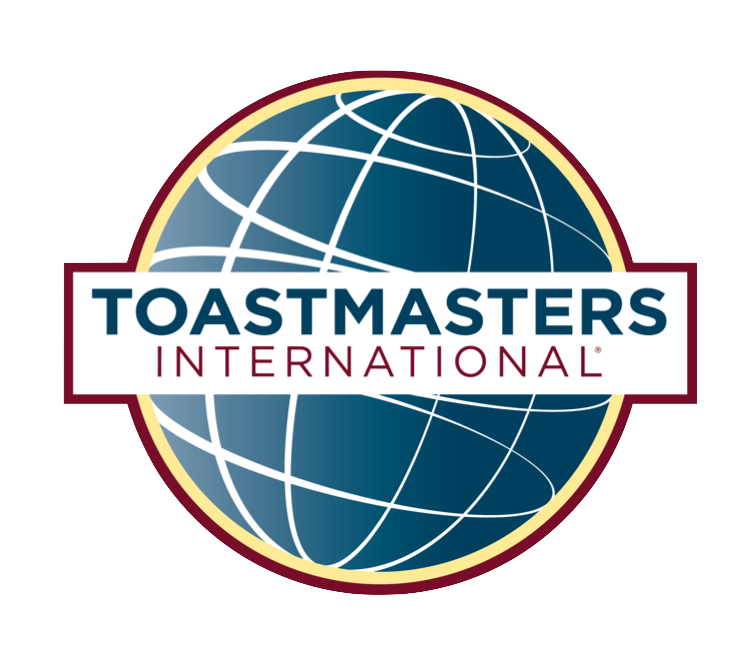
Writing vs Speaking
By Stephen Grant ATM-B
There are inherent differences between writing and speaking, and by understanding these differences we will be better able to write and deliver an effective speech.
Differences
Spatial and Temporal
Speech implies both spatial and temporal presence (speech requires two people to be at the same place and at the same time in order to operate) while writing implies spatial and temporal absence (writing can operate even if the writer is not at the same time and place as the reader).
Construction
Read a passage from a book and compare the construction and presentation of prose versus dialogue.
-
Writing typically has longer sentences, more passive, longer words and wider vocabulary.
-
Speaking is active, more colloquial, shorter simpler words and sentences.
How Meaning is Conveyed
Writing derives meaning from selection and structural arrangement of words. Speech derives meaning from more than the words.
- Sounds and intonations, changes in pace and volume, gestures and eye contact are used to convey meaning in speaking. We do not require complex words and sentences to do the heavy lifting for us, we can leave it to the non-verbal communication.
- In writing, meaning is derived form grammatical construction, the use of punctuation and the arrangement and selection of words and phrases. Therefore we need to conform the written message to message to one that is given in a speech not in an essay.
Audience
- Immediate Interaction - When speaking audience interaction is immediate and can have an impact on the speech as it is given.
- Passive versus active
- Control - Audience can exert some control over the speech whereas there is no control exercised by the passive audience of a written word.
What Does This Mean for Us as Speakers?
Start With an Idea and Structure
- A speech is about ideas not words or phrases, don’t let the idea get lost in the words.
- Develop structure
- Use point form – stresses ideas and structure not words and phrasing.
Write Out Your Speech in Full
- In a format that reflects how the speech is to be presented
- Allows you to see how ideas fit together and flow
- Helps you identify words and phrasing that are important and identifies how you want to say it – in a global perspective.
Prepare Speaking Notes
By breaking down speech into ideas and structure:
- Helps focus on ideas and flow of speech
- Gets the focus off the words and phrases and allows us to focus on the audience.
- Allows us to be spontaneous - Often the spontaneous thoughts that pop into our head are superior to what we have written because they are begotten by audience interaction or from the feel we get from an audience.
- Allows the speaker to seem to be in the moment and unrehearsed. Speeches should be conversations, when was the last time you rehearsed a conversation? Perhaps a delicate talk with a spouse or asking the boss for a raise. Of course in our house that is a delicate talk with my spouse.
- Don’t need to search for wording only ideas the words will come as we speak.
Answer the Questions What, Why? and How?
- Helps eliminate problem of overwriting. Overwriting prevents the reader filling in the gaps with their own imaginative response.
- Ironically, the more you describe, the less satisfying your description, the less vivid and accessible. The listener takes pleasure in completing the images. The strength of fiction and poetry often lies as much in what is left out as in what is said.
Practice
- Use Powerpoint outline you have created
Speak Out Loud
If we practice out loud it will allow us to
- Edit the speech with our natural speaking style
- Helps us remember the speech
- Easily deliver
- Appear much more natural and relaxed
- Use words and phrasing will suit our style.
Delivery
Have a Conversation
- How we speak mirrors how we think, therefore it should also mirror how the audience thinks. We don’t think in prose and neither does the audience.
- A conversation implies a response from the audience, otherwise it is just a lecture. A response is elicited from humour, questions, or emotional cues. We can use the audience responses to help mould and steer our speech we will not be able to do that if we are focused on delivering what we have written.
Audience Interaction - The Most Important and Powerful Tool
- Audience feels part of speech if they participate, otherwise they might as well just read what you are going to present. The audience wants the interaction, otherwise they would just as soon read what you have to say in a letter or book.
Talk With The Audience, Not at Them
- This refers to the interaction between you the speaker and the audience. Smile ask questions, react to audience response to what you have said.
- This is why personal stories work so well, because we are using a personal anecdote to deliver a message making ourselves vulnerable and creating a stronger connection to the audience. We also show that we have lived what we are talking about, we have a stake in it, it is not some abstract idea that we are telling the audience to do and not having been there ourselves.
- Telling them something rather than sharing something. If you share something with an audience the idea sits there for them to decide if they like or not. People hate being told what they should do. Challenge, but do so in the context of a story.